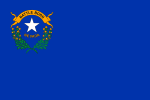Tule Springs Ranch
Buildings and structures in Las VegasHistoric districts on the National Register of Historic Places in NevadaHistory of Las VegasNRHP infobox with nocatNational Register of Historic Places in Las Vegas ... and 3 more
Ranches on the National Register of Historic Places in NevadaTourist attractions in the Las Vegas ValleyUse mdy dates from August 2023

Tule Springs Ranch and the remaining buildings are listed as a district on the United States National Register of Historic Places in Las Vegas, Nevada. Part of the area is included in the Tule Springs Archaeological Site and is listed on the U.S. National Register of Historic Places. The building are part of the Floyd Lamb Park at Tule Springs which is operated by the City of Las Vegas. Located about 20 miles from the Strip off U.S. Highway 95 north.
Excerpt from the Wikipedia article Tule Springs Ranch (License: CC BY-SA 3.0, Authors, Images).Tule Springs Ranch
Heritage Harbor Drive, Las Vegas
Geographical coordinates (GPS) Address Nearby Places Show on map
Geographical coordinates (GPS)
| Latitude | Longitude |
|---|---|
| N 36.319722222222 ° | E -115.26805555556 ° |
Address
Floyd Lamb Park at Tule Springs
Heritage Harbor Drive
89131 Las Vegas
Nevada, United States
Open on Google Maps





